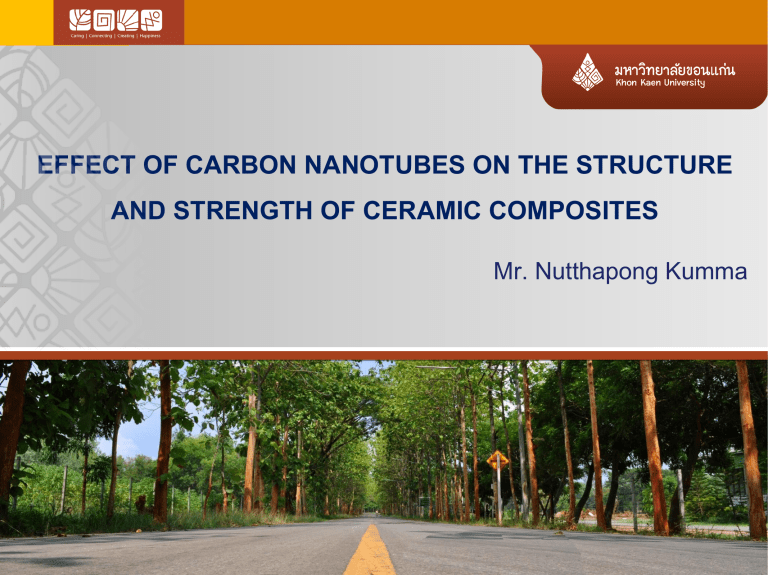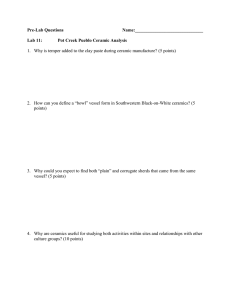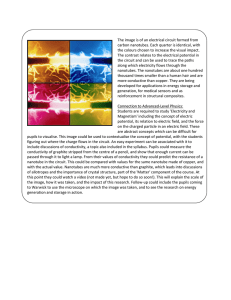
EFFECT OF CARBON NANOTUBES ON THE STRUCTURE AND STRENGTH OF CERAMIC COMPOSITES Mr. Nutthapong Kumma Introduction Ceramics are already stiff and strong CNTs have outstanding mechanical, thermal, and electrical properties Ceramic matrix materials, the mechanical property of greatest importance is toughness or resistance to crack growth. One of the most promising types of ceramic material is ceramic based on Al2O3. Curtin, W. A., & Sheldon, B. W. (2004). CNT-reinforced ceramics and metals. Materials Today, 7(11), 44-49. Result It is reported in the literature on reinforcing an Al2O3 ceramic matrix with carbon nanotubes that the strength increases by different degrees. For example, The cracking resistance of ceramic composites improved by up to 200%. carbon nanotubes slow down and even stop crack growth in such materials. Fig. 2. SEM images of a composite with carbon nanotubes The strength of these samples in bending reaches 400 MPa Result TABLE 1. Characteristics of Ceramic Samples obtained from α-Al2O3 and Carbon Nanotubes (CNT) obtained from a MethaneHydrogen Gas Mixture Starting with nanotube content 9 – 10 vol.% we were not able to obtain zero porosity and water absorption because of difficulties in finding a sintering regime. As the nanotube content increases to 24 – 25 vol.% this optimization process becomes especially complex. Conclusion The bulk of the nanotubes is concentrated in the region of the residual closed porosity and does not form a reinforcing structure. The strength in bending of such samples does not exceed 300 MPa. The increase in strength and the simultaneous decrease of the density of the material make it possible to use it in the manufacture of structures for different fields of engineering, including the aerospace and automobile industries. Thank you!



